You Do Not Just Buy a House
We moved into our present home almost forty years ago. While the property had lawns front and back, there was little evidence that the previous owners were interested in gardening or landscaping. There were, however, lovely trees, some of which were quite large. In the front, close to the public walkway, there was a spindly tree with very large leaves which I could not identify.
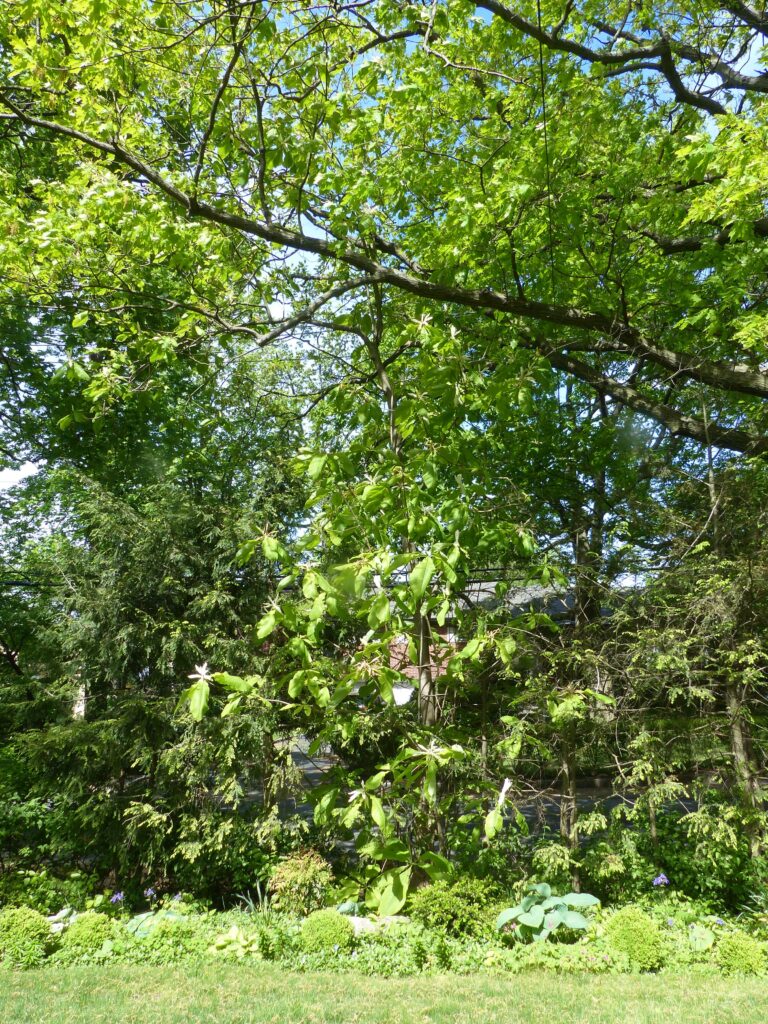
Plant Detective Work
Botanists have devised an entire chart of different leaf shapes in order to simplify discussion of various plants: (https://en.wikipedia.org/wiki/Glossary_of_leaf_morphology#/media/File:Leaf_morphology.svg) The leaves on this tree – which are huge, averaging 19” in length – can be described as elliptical with an elongated and pointed body. Eventually, someone identified the tree as being a member of the magnolia family. While the shape of this tree’s leaves is the same as that of standard hybrid magnolia (Magnolia x soulangeana) that you routinely see in gardens, it is, at least, six times the size of the standard leaf.
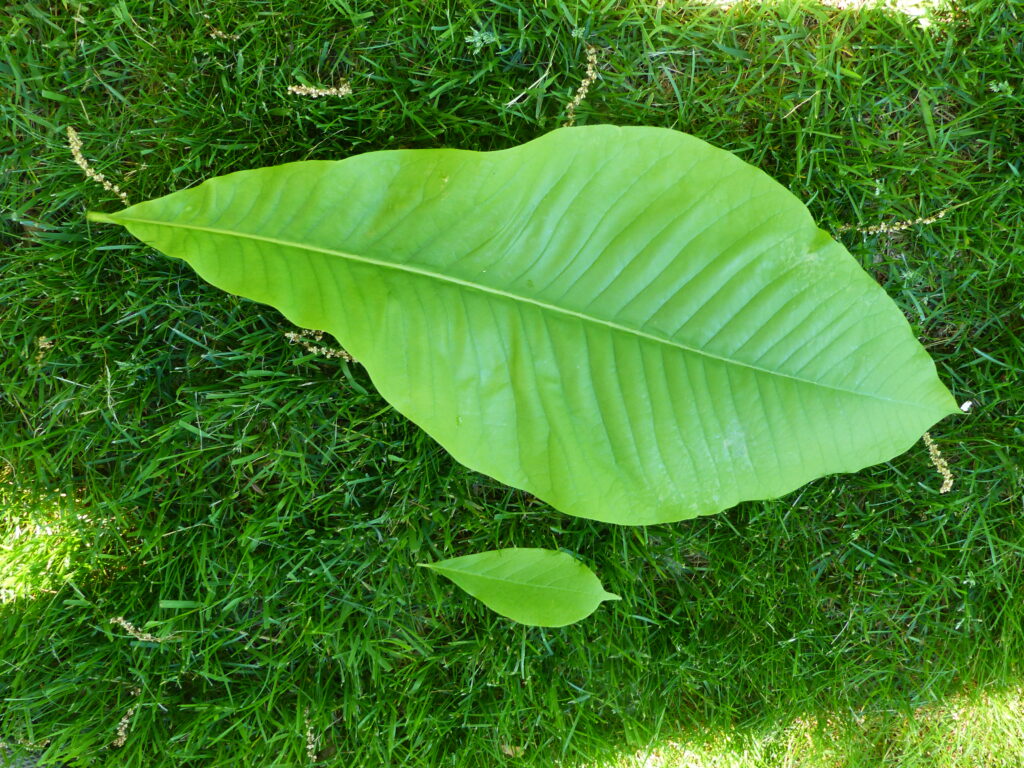
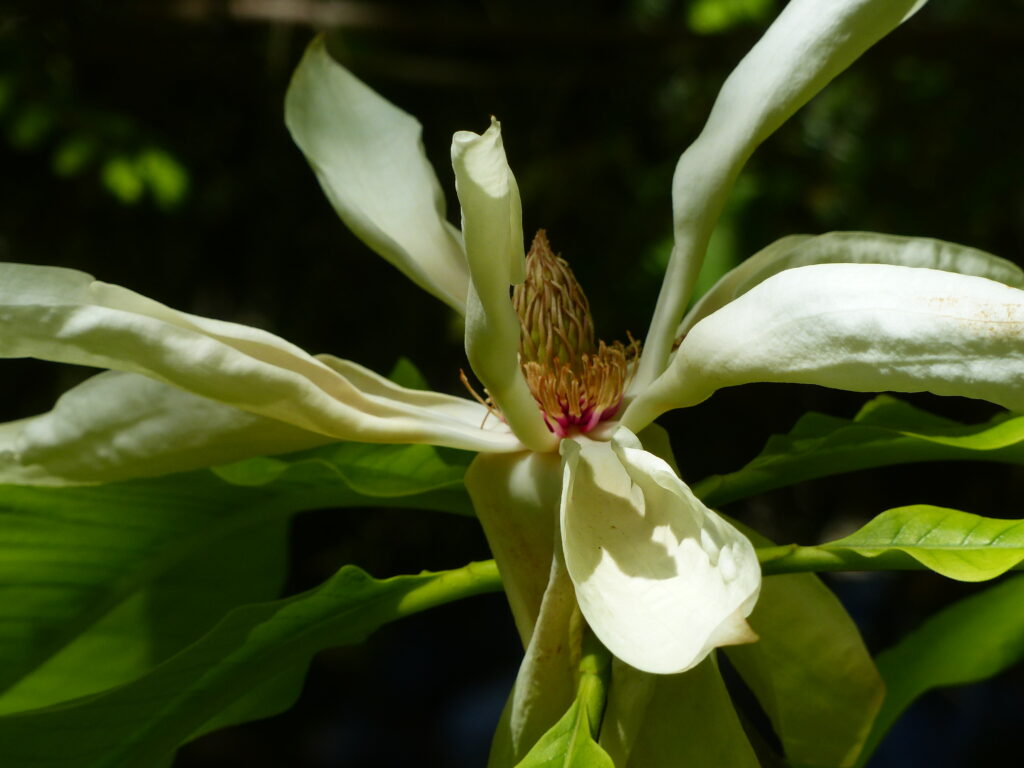
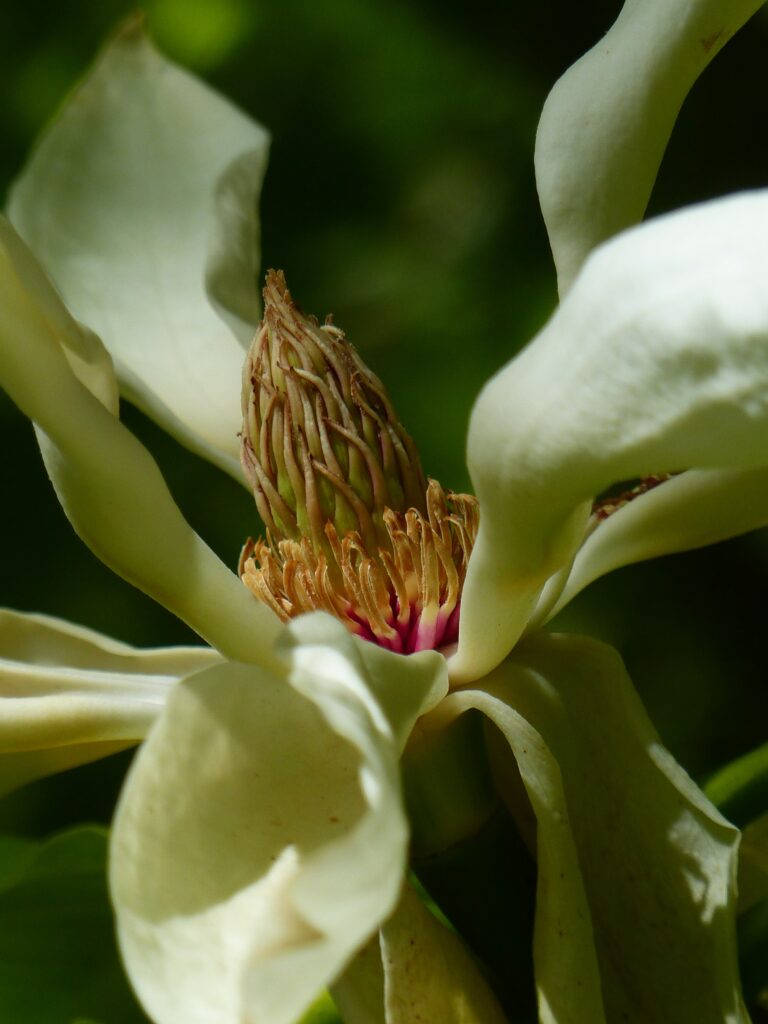
New York Botanical Garden to the Rescue
While their staff is also working off-site due to Covid-19 and does not have access to all of their materials, they ventured the opinion that it was an Umbrella Magnolia (Magnolia tripetala). (Parenthetically, I must recommend Missouri Botanical Garden’s website as an excellent source for information about all types of plants).
Since the tree is very unusual, I have had many people over the years ask me to identify it precisely and I really could not do so. Last year I finally photographed a leaf and sent it off to the New York Botanical Garden’s (NYBG) wonderful staff to help me out. The answer came back that there are over 240 species of magnolia and that it would require a photo of the flower to make a reliable identification. Incidentally, this is not unusual. Flowers plus leaves are generally the minimally necessary information required to venture a valid ID. As I was gardening along my hedge this spring (mid-May), another passer-by, asked me yet again about the tree. That helped jog my memory to take a photo and send it off quickly to NYBG.
The root of tree name Magnolia is the same root as for the clade Magnoliids (a clade being a group of organisms that is believed have descended from a common ancestor) , Order Magnoliales and Family Magnoliaceae, and honors the French botanist Pierre Magnol (1638-1715). He was born into a family of pharmacists and at that time, medications were compounded from plants so his interest in botany was not surprising. His work with plants predates that of Carl Linnaeus who devised the present method of scientific naming. Magnol’s innovation was to develop the concept of plant families based on combinations of physical (morphological) characteristics which he described in his book 1689 book – Prodromus historiae generalis plantarum.
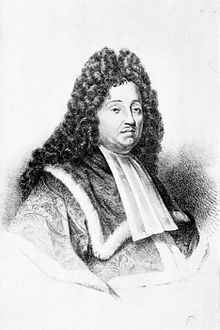
Mystery Solved!
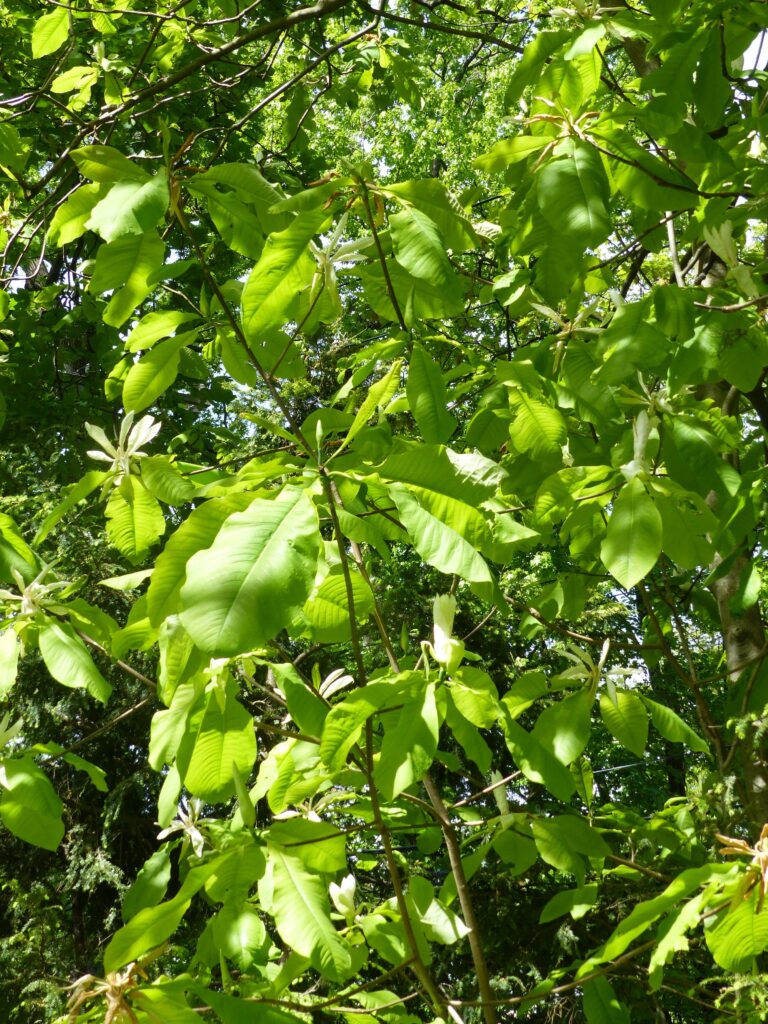
The identification by NYBG was spot on! After so many years of just intermittently wondering, I can now answer others with assurance!
Is this tree native to NY?
It is an understory tree that is native to rich moist woods, ravines, slopes and along streams in the Appalachian Mountains from Pennsylvania and West Virginia to North Carolina, Tennessee and Kentucky plus the Blue Ridge Mountains into South Carolina, Georgia and Alabama. It is a small, often multi-trunked, tree that typically grows to 30′ tall, but may rise to as much as 45′ tall. Malodorus, bowl-shaped, creamy white flowers (to 6-10″ across) bloom in spring shortly after the leaves emerge. Each flower has 6-9 (sometimes 12) petal-like tepals. Flowers are followed by cone-like pink fruits (to 4″ long) that ripen in fall. Thin, smooth, gray bark.